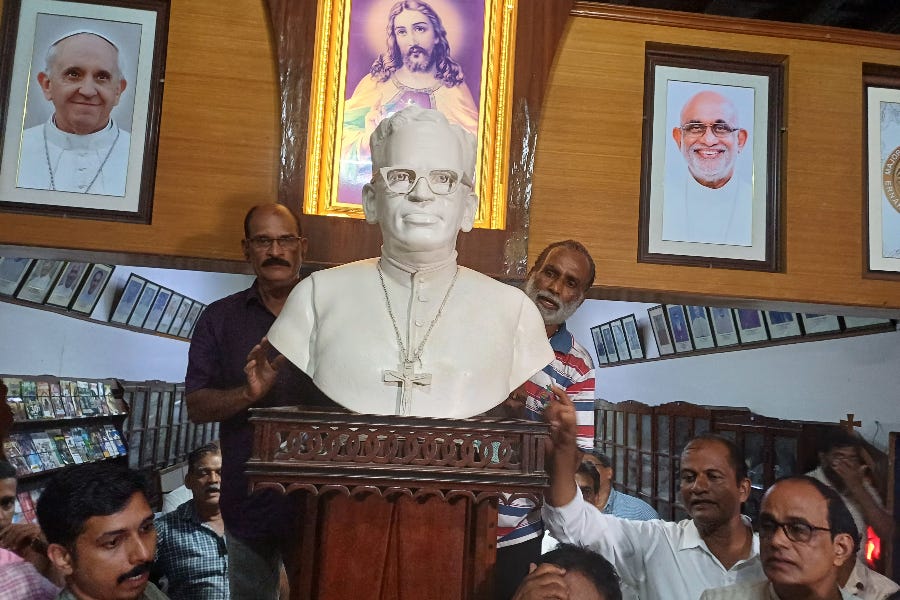Cardinal’s bust takes center stage in liturgy dispute
The Syro-Malabar Church’s liturgy dispute flared again Sunday as lay people restored the bust of a cardinal to Major Archbishop’s House in Ernakulam, southern India.

Members of the organization Almaya Munnettam (La…
